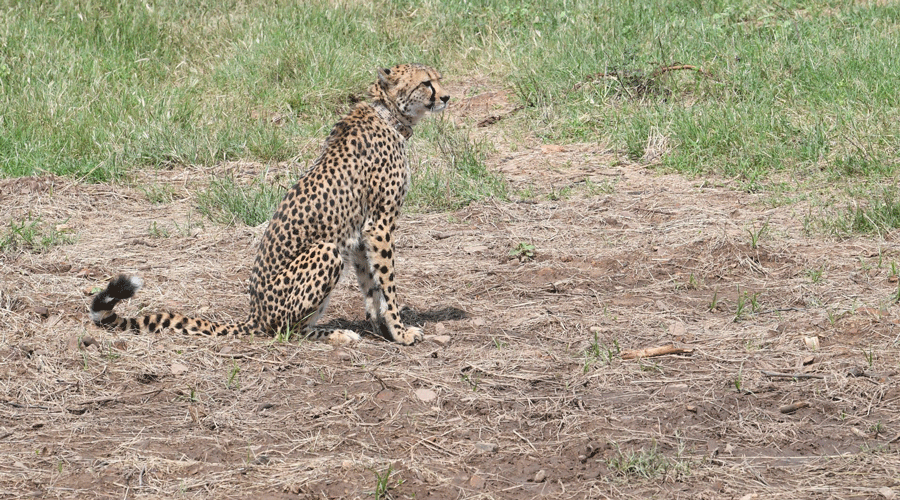Five female and three male cheetahs flown in from Namibia began exploring patches of the Kuno National Park in Madhya Pradesh on Saturday, 70 years after the animal had been declared extinct in India.
Prime Minister Narendra Modi released the cheetahs at two sites in Kuno — an open forest and grassland ecosystem — where they will be expected to live in the wild, hunting natural prey, while wildlife biologists track their movements day and night via satellite collars.
The release — a collaborative effort of India’s environment ministry, the Namibian government, and the Cheetah Conservation Fund, an international non-profit engaged in research and conservation — marks the world’s first intercontinental translocation of a large wild carnivore.
“Today, these cheetahs have come as guests and are unaware of this territory,” Modi said after the release. “We have to give a few months time to these cheetahs to enable them to make the Kuno National Park their home. India is trying its best to settle these cheetahs following international guidelines.”
Under the guidelines, the cheetahs are currently confined within a relatively small fenced enclosure, roughly 6 square kilometres, but with abundant natural prey that will allow the animals to hunt and feed and scientists to watch their activities.
“We’re at the start of a long-term science project — observations on the cheetahs will extend into years, perhaps 10 to 15 years,” said a conservation biologist at the Wildlife Institute of India, Dehradun, who is not directly associated with the reintroduction.
Conservation experts say the coming weeks and months are likely to be the most intense observation periods as scientists and forest officials will track the cheetahs — documenting how they respond to the local terrain and the prey around them.
“The prey species for cheetahs here are different from those in Africa — nilgai and chinkara here, instead of the impala or the gazelle in Africa,” said a WII scientist who requested not to be named. “The studies will focus on both how the cheetahs react to its prey species and how the prey species react to a predator they have not encountered before.”
Indian authorities had declared the cheetah as locally extinct in 1952 after a Maharaja shot the last observed cheetah in 1947. Scientists say the cheetah’s reintroduction will help restore the ecological balance in the open forest and grasslands ecosystem.
The eight cheetahs in Kuno — and more expected over the next five years — are intended to serve as founders of a new population of wild cheetahs in India.
Amid the celebrations of the cheetah’s return, however, some experts are calling for caution.
Ravi Chellam, a wildlife biologist who specialises in lion conservation, is worried about space available in Kuno for the cheetahs.
“In the best of habitats, cheetahs exist in densities of around one per 100 square kilometres,” said Chellam, a coordinator with the Biodiversity Collaborative, a network of institutions working to promote biodiversity science and its links to human well-being in the country.
The Kuno National Park covers an area of around 748 square kilometres. The environment ministry has said it plans to introduce more cheetahs in Kuno to help their population grow. Indian authorities managing the reintroduction have said any cheetahs that stray out will be brought back.
The average home range of an adult female cheetah is around 750 square kilometres.
Chellam has questioned the ambition and viability of the reintroduction effort given the Kuno’s size. “With the proposed intensive management, it will most likely be akin to a glorified park and not a truly wild population capable of playing its ecological role,” Chellam said.
Experts also appear to disagree on the potential threat posed by other predators in Kuno to cheetahs. A senior WII scientist said while the cheetahs were expected to live alongside co-predators such as leopards, hyenas and wild dogs, fine differences in predation would allow them to coexist.
“The differences emerge through space, time and target prey — co-predators hunt in different areas, hunt at different times of the day or night, or hunt for different species or size of prey,” the scientist said.
But some wildlife experts fear that Kuno’s leopards and wild dogs could pose a threat to the cheetahs.











